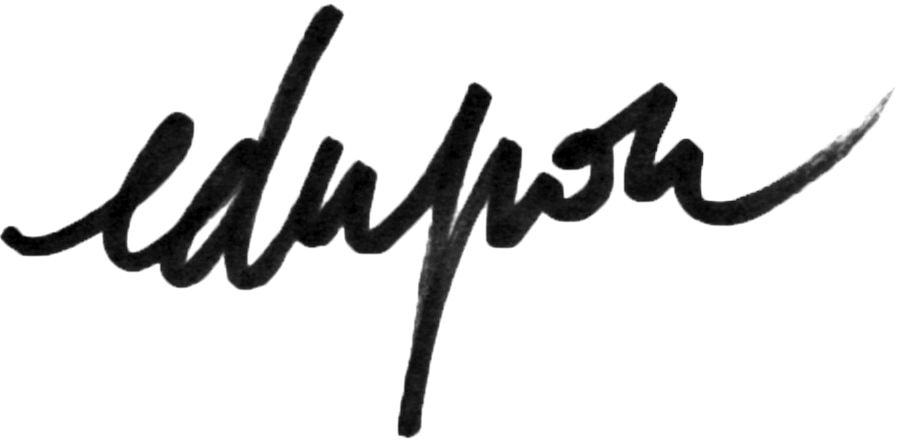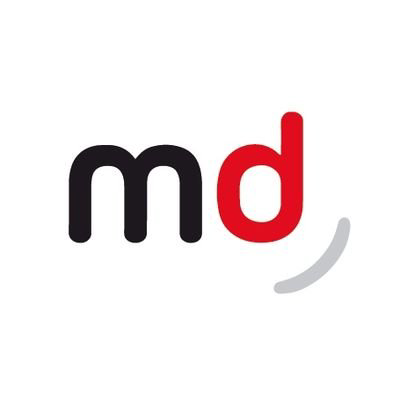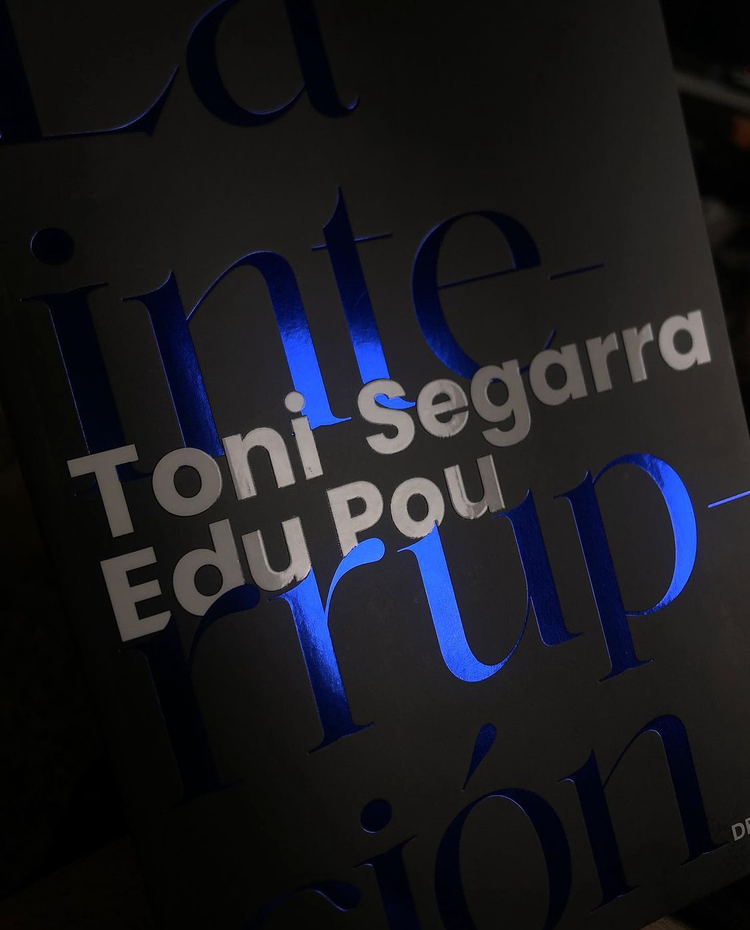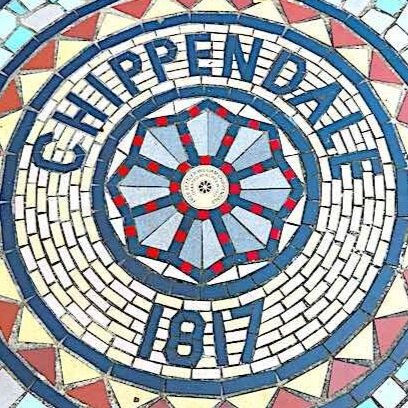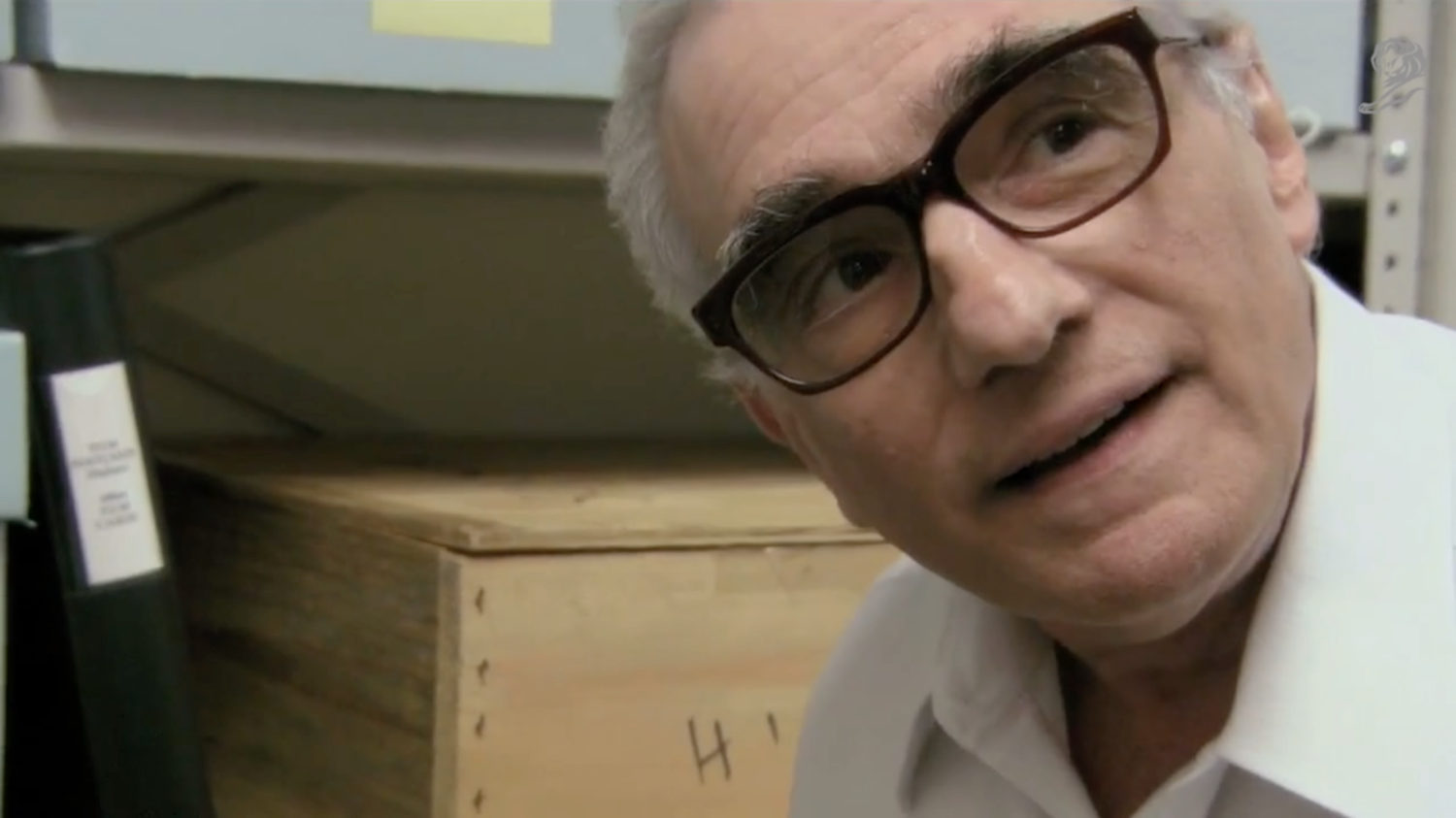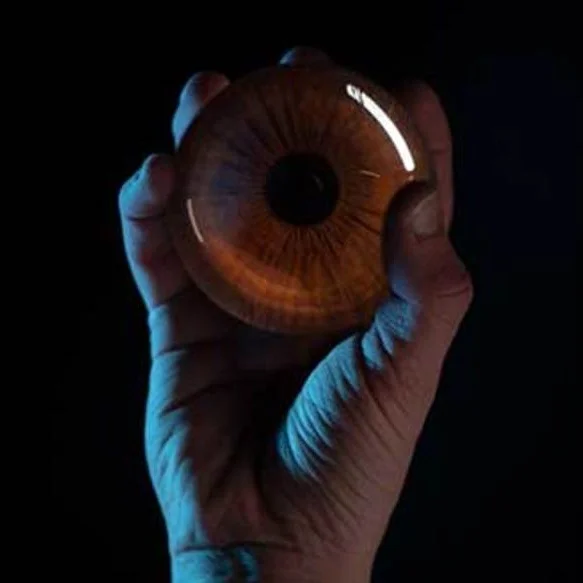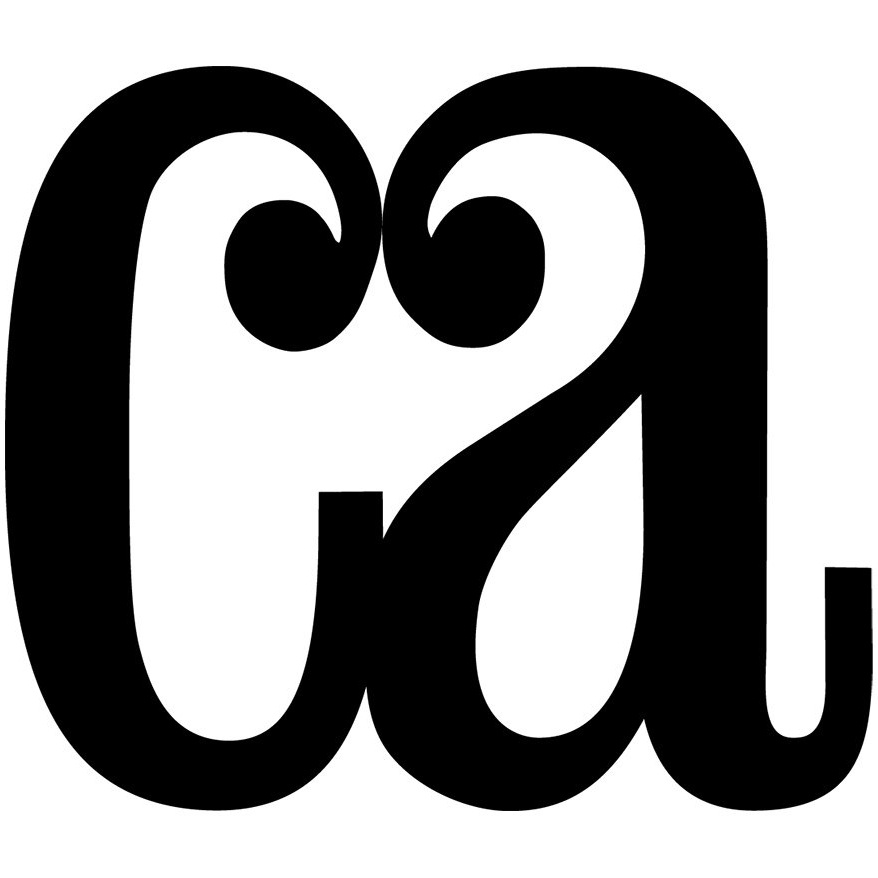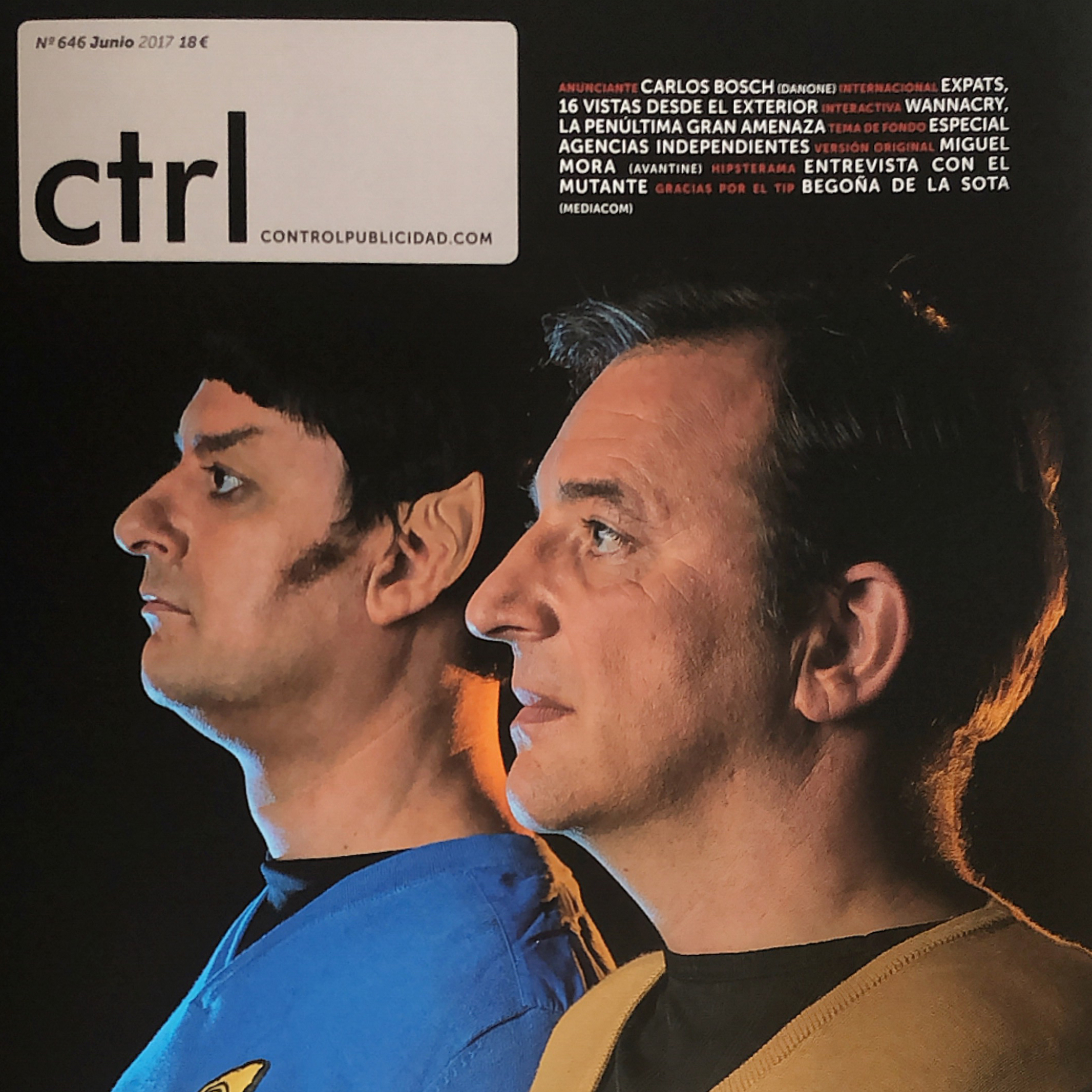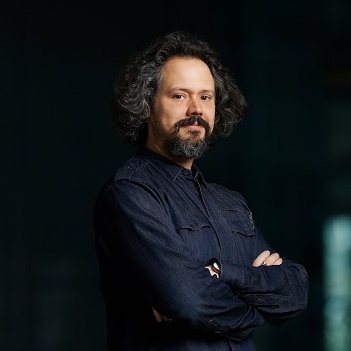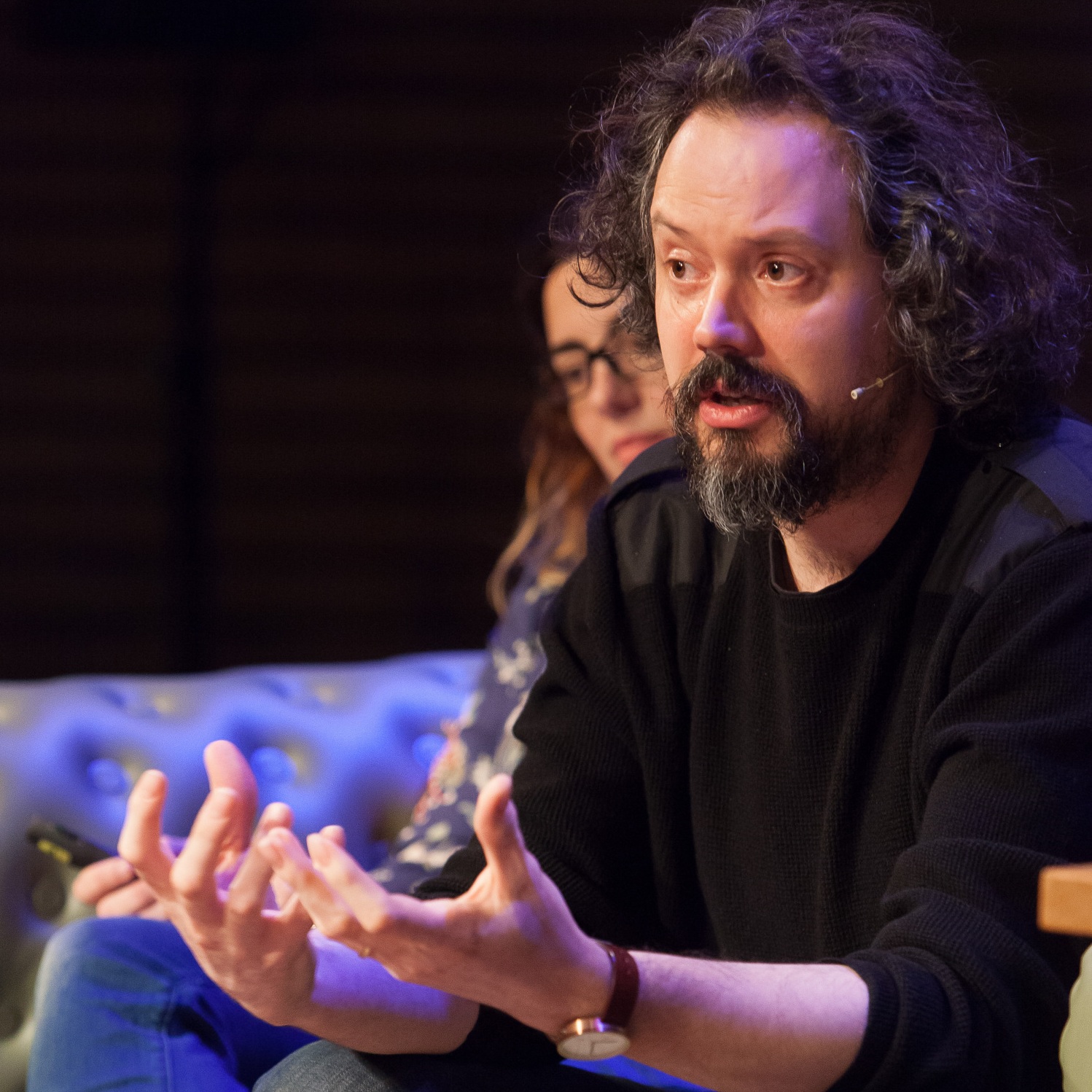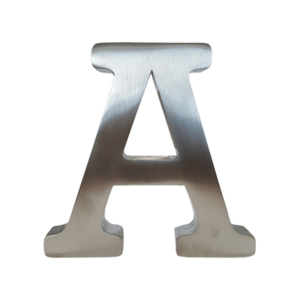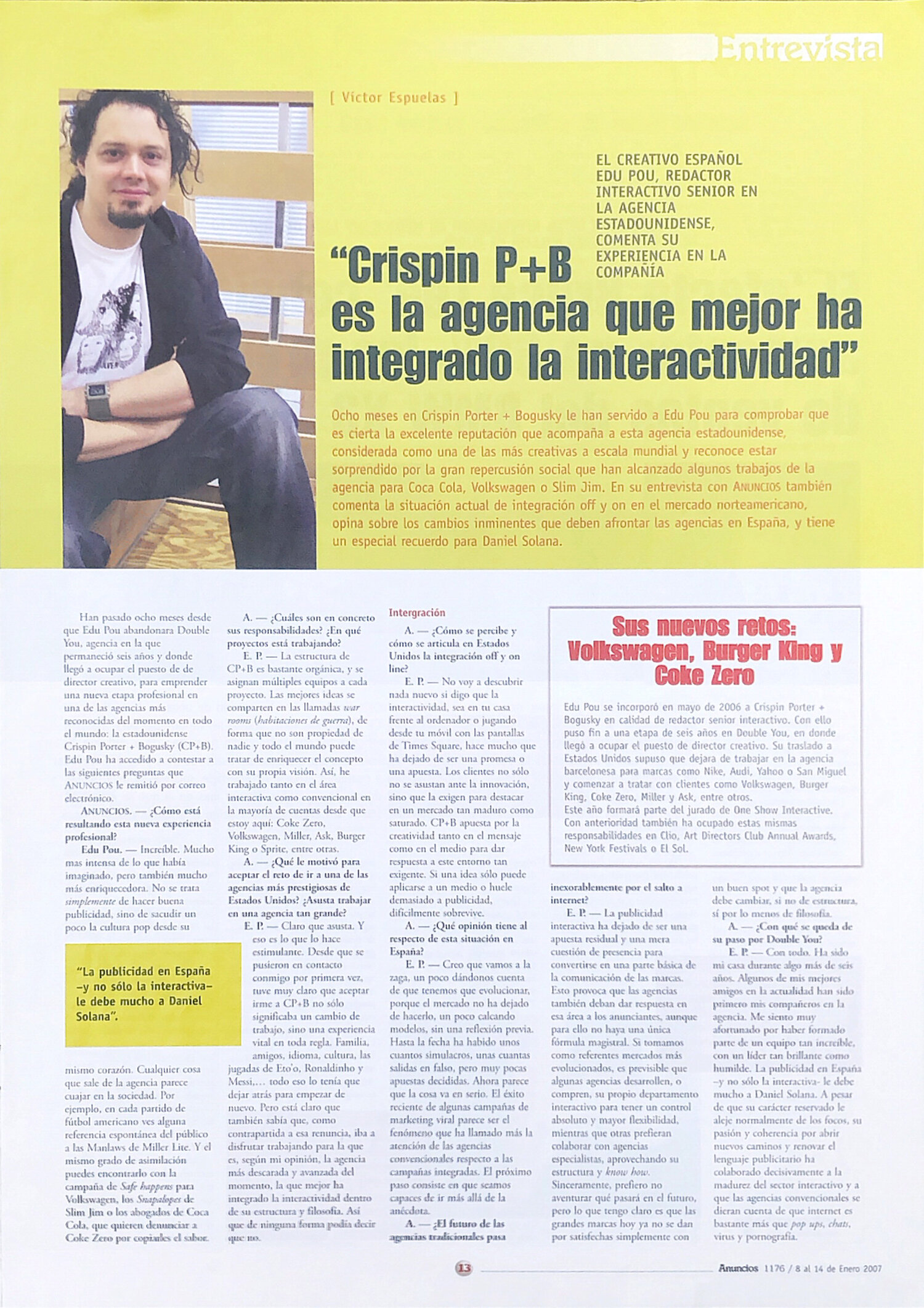Talks, workshops, panels, interviews…
The truth is out there.
EMUE 25/01/24
In a new chapter of the podcast, This Deserves an Explanation, we reflect on the value of our attention. Are we losing our attention span? Why is it increasingly difficult for us to fix it? How does attention work? What or who is trying to capture it? How can this dispersion affect us?
We try to answer these questions with the contributions of Charo Rueda, researcher at the Mind, Brain and Behavior Research Center (CIMCYC) and professor at the Faculty of Psychology at the University of Granada; Toni Segarra and Edu Pou, publicists; and Amador Fernández-Savater, philosopher and editor.
(Episode in Spanish below)
—-
En un nuevo capítulo del podcast Esto merece una explicación reflexionamos sobre el valor de nuestra atención. ¿Estamos perdiendo la capacidad de atención? ¿Por qué cada vez nos cuesta más fijarla? ¿Cómo funciona la atención? ¿Qué o quiénes intentan captarla? ¿Cómo puede afectarnos esta dispersión?
Intentamos responder a estas cuestiones con las intervenciones de Charo Rueda, investigadora en el Centro de Investigación Mente, Cerebro y Comportamiento (CIMCYC) y profesora de la facultad de Psicología de la Universidad de Granada; Toni Segarra y Edu Pou, publicistas; y Amador Fernández-Savater, filósofo y editor.
Learning to be ignorant
"The means to learn are abundant; it's the desire to learn that is scarce." Starting an opinion article by stealing someone else's line—in this case, Tim Ferriss's—might seem nonsensical. In reality, what doesn’t make sense is to pretend to create in isolation, without building on the knowledge others generate and that culture sifts through with Darwinian precision. The evolution of ideas is as relentless, if not more so, than that of species: All are potentially endangered. Those of us who give voice to brands must be prepared, and there is no better preparation than revitalizing that desire to learn that Ferriss speaks of.
It might seem that a somewhat sickly curiosity has marked my career, from my beginnings at DoubleYou to We Are Social Sydney, through Wieden+Kennedy, Barbarian, or Crispin Porter+Bogusky, but that would be a biased reading. It’s true that in each stage I have learned new things and had priceless experiences. A bit like Roy, the replicant from Blade Runner. The main difference is that I haven’t lived them solely for my own benefit. Another notable difference is that I’m not an android... I think. Jokes aside, the need to understand the world firsthand responds to a further need to understand the culture into which the brands I work for must integrate if they want to be relevant. A learning that never ceases.
This certainty has never been more evident than in the times of exponential growth we are experiencing. Technology—omnipresent and unstoppable—makes certainties have an increasingly shorter shelf life. But when the urgency to learn also grows exponentially, the old educational models prove too distant from a frenetic world, where speed and efficiency are fundamental. In this context, Metacampus is born, the educational platform for professionals that I have just launched with Pere Pérez and Alison Alexander. Combining live classes, taught by experts from around the world, with information about blockchain, crypto, artificial intelligence, NFTs... categorized and personalized with machine learning, we intend to accelerate the learning of the reality that the new phase of the internet is creating. And do it in real time.
Who knows what the next frontier we will have to face will be? After all, that is the real learning. Being aware of our endless ignorance is the first step. There is no better way to be in the present moment—as mindfulness experts proclaim—than to wake up each day in a different and fascinating present. A present ready to offer potentially unlimited possibilities in exchange for the assumption that we ourselves are also under construction and have unlimited potential. We must learn to be ignorant. In the words of Oscar Wilde, if you know what you want to be, then you inevitably become it - that is your punishment, but if you never know, then you can be anything “and that is your reward.”
Edu Pou y sus Asimetrías
J.A. Alguacil (Fefo): “Charlar con @edupou sobre los nuevos lenguajes publicitarios y de paso de #lainterrupcion es siempre un placer, precisamente por sus #asimetrias . No os perdáis esta pedazo de entrevistas donde lo cuenta todo.”
“Chatting with @edupou about new advertising languages and, in passing, about #lainterrupcion is always a pleasure, precisely because of his #asymmetries. Do not miss this great interview where he tells everything.”
(Full interview in Spanish below)
Sitges NEXT 11/11/22
Cerrando el círculo de La Interrupción
Toni Segarra and Edu Pou are set to take the stage at the Sitges Next Innovation Festival to discuss their book "La interrupción." The book, which explores the themes of disruption and innovation, had its origins at the same festival six years ago. Now Segarra and Pou are returning to Sitges to share their insights and experiences with attendees. Enric Nel-lo will lead a round table discussion featuring the two authors, during which they will delve into the virtues and sins of interruption in advertising and in life in general. The discussion is sure to be engaging and thought-provoking as Segarra, Pou, and Nel-lo offer their unique perspectives on the role of disruption in driving progress and shaping the future.
(Full speech in Spanish below)
Julia en la Onda
The role of interruption in advertising, according to the experts Toni Segarra and Edu Pou
In 'Julia en la Onda', we spoke with the publicists Toni Segarra and Edu Pou, authors of 'La interrupción', a book in which they expose the advertising currents that both represent.
'Interruption' is the name that publicists Edu Pou and Toni Segarra have chosen for their new book, a manual in which they explain how the economy of attention works and the importance of knowing how to interrupt to get a message across to an audience.
In 'Julia en la Onda', we spoke with the two authors about how the joint writing of a book like this has been, which they confess to having written in "just 7 days", although "informally", they acknowledge that they have been writing for over 20 years.
Today, advertising is like someone walking down the street carrying a sign to attract the attention of the people around them. And although now, unlike a few years ago, we have more effective tools to convey specific messages to the target audience, the work of a good publicist has hardly changed, let alone lost importance.
Understanding advertising as an interruption is, they say, a way to make it effective and also to understand the value of knowing how to sell well. And despite the fact that interruptions have a very bad reputation, "there is nothing more boring than knowing what is going to happen," they say, even though many do not have an intrinsic surprising character.
(Radio interview in Spanish below)
Monday Design Forum 26/04/22
Just When I Thought I Was Out…
Keynote presented as part of the Monday Design Forum to a cohort of applied design students: undergraduates, associates, and bachelors. Took the audience on a global journey through the world of advertising, sharing insights gained while working in creative agencies on three continents. Explored the quest for creativity and the pursuit of staying on the edge, inspired by Kurt Vonnegut's philosophy: “I want to stand as close to the edge as I can without going over. Out on the edge you see all kinds of things you can't see from the center.”
Dr Pou y Mr Gacho
Un viaje a la nueva realidad de las identidades digitales.
Metacampus co-founder and ECD Edu Pou attended Sitges Next to give a keynote about the potential of web3 to allow people to adopt a digital identity and live an anonymous parallel life sheltered from ageism, sexism, and racism. Pou argues that web3 technology has taken the adoption of digital identities to the next level, providing a level of privacy that was impossible with previous versions of the internet. “With web3, individuals can create a digital identity separate from their physical identity, allowing them to interact with others online without the biases and prejudices that often arise in face-to-face interactions.” Pou contends that this has the potential to create a more equal and inclusive online society, where people are judged based on their actions and words rather than their appearance or background.
(Full speech in Spanish below)
On The Money with Edu Pou, Executive Creative Director, We Are Social
Hi Edu. To start off, can you tell us a little bit about your career and the work you do at We Are Social?
My journey is one that has taken me to the best creative shops around the world. I feel very privileged.
I started in digital at DoubleYou Barcelona. I then moved to Miami and Boulder to work for Crispin Porter + Bogusky. My next stop was Amsterdam for seven years with Wieden + Kennedy.
After that, I was in New York for over four years, first as the CCO of The Barbarian Group. and then as the ECD and partner to the VR-centric studio Here Be Dragons, with Patrick Milling-Smith and Chris Milk.
Now, I’m the ECD at We Are Social Sydney, working to create ideas worth talking about on behalf of bold and progressive brands. Digital, entertainment, virtual reality, social… in three different continents. And now I think my passport has expired. We’re living in weird times.
As the creative team behind Aussie fintech Zip’s ‘Can I Zip It’ campaign, can you take us back to the beginning of the journey with the brand?
I have worked for financial services brands in the past, but what interested me with Zip was that they wanted to show the disruption that the area needed, placing the customer at the centre. That’s why a social-first campaign fits so naturally.
Working very closely with the Creative Shop at Facebook, we pitched several clever ideas, but nothing was more clever than a simple demo that Facebook’s Jay Morgan put together. He updated the language of a classic before and after campaign, embracing the social world of visual transitions, and using the gesture of tapping our phones as the trigger for the transformation.
Then we only had to make it relevant, add a sticky song, find the right talent for our audience, make it entertaining, stretch it to make the most of each platform and bring the magic of the screen to the real world. Oh, and execute the hell out of it. Simple, right?
How did research guide you and what were the considerations that shaped your creative territory and response to the brief?
Research and insights inform everything we do at We Are Social. From the start, we used it to build the foundations around the consumer. Our research also helped guide the selection of ambassadors that we used throughout the campaign.
While the research was evolving, so was the casting. We were looking for the right people, and we were pitching the work while we were building it.
Research doesn’t stop with lofty thoughts. It guides you to take meaningful actions across the entire campaign journey.
In Zip, we also had a client that really understood its customer and product and could contribute heavily to the process. Oh, and that little company we were working with, Facebook, weren't bad in this area either!
What were the challenges and benefits of telling the story through Instagram Reels and short-form videos?
The challenge was how to turn something simple into something with longevity. That’s where storytelling came to the rescue. Again and again. Our team wrote what seemed like an endless number of scripts, until we landed with the right one.
The benefit was how fresh and relevant this medium was for the consumer. Steve Brennen, from Zip, suggested using the iconic track Can I Kick It as a mnemonic, and it fitted like a glove.
Tell us more about the broader creative ecosystem and how the work done in digital inspired other channels?
One of the good things about being at a social-first agency is we don't take anything for granted. The creative process is always in flux.
Understanding how the concept could adapt to different mediums, was defined from the get-go. We knew we had to hit a lot of deliverables from the start of the project.
So we made sure we didn’t forget any of the elements. With that in mind, for instance, we ensured that the concept that sparked our thinking translated well anywhere. Including outdoor.
We found our answer in social, once more. Stickers, fonts, gradients… we applied the unorthodox foundations of motion to still images to get equally unorthodox executions that you couldn’t miss.
How did you and the client go about selecting the ambassadors for the brand?
We wanted people that were recognisable, and credible, relying on their areas of expertise rather than their acting abilities.
I was impressed with the level of accommodation we got. Nick Kyrgios came prepared for anything he needed to do. Even when we asked him to play a caricature of himself, he was up for it. The result was the fun and genuine narrative we wanted to create.
How did you balance control of the brand, key messages and creative concept while giving ambassadors the freedom to do what they do best?
When you're looking to leverage the authenticity of those in front of the camera, you have to build a narrative they feel comfortable with. We can’t compromise the concept, and we need people to understand what we’re bringing to them.
But a memorable campaign shouldn't go against the natural abilities or identity of the people that we work with. That's why although we were iterating the narrative, we made sure the ambassadors knew beforehand what we were planning.
How do you approach a creative brief using platforms like Instagram as your launchpad?
Marshall McLuhan famously said, “The medium is the message”. And when people become that medium things start getting interesting.
At We Are Social, we want to sit in the middle of a Venn diagram between the brands we work with and what people are talking about.
We're playing catch with our audience. We define the norms, but then people shift and show us the way forward. Our audience is part of the creative team.
What would be your advice for marketers who don’t believe that digital platforms can play a leading role in building great brand outcomes?
At this stage, it’s not a matter of believing. You don’t need faith when you have data that backs the impact of digital and shows the key role it plays to minimise the distance between brands and people.
The curator of this issue’s “Digital“ section, Edu Pou, is Executive Creative Director at We Are Social Australia, Sydney.
Nothing beats the voice of a living brand.
Michael Weinzettl queries Edu Pou. Born in Spain, he began his career at the other end of the world as a copywriter in Barcelona. Since then, he has criss-crossed the planet working for top agencies such as Crispin Porter + Bogusky in Boulder, Colorado, Wieden+Kennedy Amsterdam and The Barbarian Group in NYC, amassing tons of creative awards along the way.
Hello Edu, first of all, many thanks for this beautiful selection of recent digital works for this issue of Archive. How did you go about it?
Being a creative and being curious are one and the same. Scouring the web looking for inspiration comes naturally, and sharing and debating is just part of the process. Gone are the days of keeping your cards close to your chest. There are too many interesting sources providing too much goodness on a daily basis to keep your favourites to yourself. My problem has been the opposite, since making a selection felt like a betrayal to all the amazing work that didn’t make the cut.
Was it a challenge for you in these times of COVID-19? I can imagine that there is less work produced at the moment or am I completely wrong about this and campaigns even flourish in times like these?
The current situation has affected everyone on a deep level. We had to rethink the way we did the most basic things, so it has definitely posed many challenges at work as well. The most obvious ones have to do with the way we produce our projects. The test for us starts long before production though, as we’re facing a new way in which individuals connect with one another and with brands. Even then, creativity finds a way. One of our most recent projects for Audi, for instance, emerged as a direct consequence of this redefined relationship: The Drive is a 4-hour long Slow TV project that follows the journey of an Audi A6 through the Australian countryside. It’s a quasi-meditative film that gave viewers the pleasure of the open road, during a moment when it was impossible for them to experience it in real life.
How did you experience the past months? Did you work from home, and did that prove to be more or rather less stimulating for your work? Did your work day differ drastically from what it was before the pandemic struck?
I live in Tasmania and I used to commute to Sydney on a weekly basis. Since late March, the borders of my state have been shut, so I’ve had to continue to engage with my team by video conference, even after the lockdown was lifted in New South Wales. Most of what we do revolves around human connection, and for the last few months I’ve had to experience it through a screen. I’m missing the serendipity and happy accidents of impromptu meetings. Hangouts are fine, but there’s something magic that only happens when you’re in the same space with other people.
Judging from your bio, you have done so much and worked for so many top agencies around the world. Can you give us a brief overview of the stages of your career? How did you get from the vicinity of Barcelona to Sydney where you are ECD for We Are Social?
You’re right. My journey has indeed been a journey. I started it as a copywriter back home in Barcelona. I quickly became a Creative Director at DoubleYou, leading projects for clients like Audi and Nike, including the 2004 Cannes Grand Prix winner. After 6 years, I joined Crispin Porter + Bogusky, where our team was named best of digital, also in Cannes. Two years later, I moved to Amsterdam to work at Wieden+Kennedy, first as a CD, for global clients such as Coca-Cola and Electronic Arts, and later as Head of Creative Innovation, across all accounts. At W+K I also met my Tasmanian wife. Seven years later, I returned to the US to be the CCO of The Barbarian Group in NYC. Working on a project for Etihad, featuring Nicole Kidman, I fell in love with VR and I decided to team up with Patrick Milling-Smith and Chris Milk, as the ECD of Here Be Dragons. Very quickly, Dragons became one of the most prestigious and awarded VR-centric studios in the world. Two kids later, my wife and I decided to move back home. Being from opposite sides of the world, we had to pick which “home” and she won. I was already in Tasmania when Suzie Shaw, MD at We Are Social, contacted me to join her team. If you knew Suzie you would know that she doesn’t take no for an answer and also that, when she asks, you don’t even think of saying no.
Please tell our readers a bit about We Are Social, how would you describe the agency?
We are a socially-led creative agency, with over 850 social experts in 15 offices around the world, devoted to prove the power of social thinking to drive business value. Our work isn’t defined by formats or platforms but by real people and their real interests. We love fast and popular culture as much as we love helping smart brands immerse their stories into the conversations their audiences are having. Make ideas worth talking about is our mantra, which takes us to very interesting and diverse places: from setting up an AR installation for Samsung in the heart of Bangkok to organising a Global Pride virtual parade in Nintendo’s ‘Animal Crossing: New Horizons’.
I read that at the start of your career in Spain turned out to be a rather bumpy ride...
The beginning of every career should always be somehow difficult. It tests how much you’re willing to endure for what you love doing and gives you the ability to course correct and learn to fail better. For instance, thanks to my baffling experience at a local TV station whose electricity got cut off because they didn’t pay the bills, I decided to quit and immediately take a one-week job at a digital agency that ended up becoming a 3-year long gig and the beginning of my journey into advertising.
When did you first get interested in the digital side of advertising?
I was in my last year at university. Joakim Borgström was in my class and he was the first one to introduce me to the possibilities the Internet offered. Thanks to him I discovered a new set of rules of engagement between brands and audiences that I still find fascinating. Jab has been an inspiration, a colleague, and a friend for over 25 years.
What has happened to print and film? Do you agree that they play a much lesser role now and that digital has become, for better or worse, the lead medium when new promotional campaigns are to be created?
I’m of the opinion that creativity wins, irrespective of the medium. There’s wonderful work being produced everywhere. The landscape and the way we all consume content has changed, that’s all. Having so many friends in so-called full-service agencies this opinion may be a bit biased, but I’m entitled to my own fake news.
When did you realise you had made it big-time in advertising?
I don’t think I have. At all. It’s not false modesty, it’s simply experience. I’ve worked with so many creatives that have shaped the history of advertising, one way or another, that I’m very aware that I’m not there yet. Don’t get me wrong, I’m proud of my career, but I think that my peak is ahead of me. I’m still so young...
Did recognition from the awards shows play an important part in this?
Awards, especially the 2004 Cannes Grand Prix, gave international exposure to my work very early in my career, which ultimately translated into having such a very rich and nomadic life in advertising. Not directly, though. Without my former boss and mentor at DoubleYou, Daniel Solana, the journey would have never started. When I got a job offer from CP+B, I left the decision in his hands, and he encouraged me to take it. I would have never taken that job had he told me to stay.
What are some of the campaigns you created that you look back on with the fondest memories?
I’ll have to mention some of the first ones like San Miguel City for San Miguel and Bear in My Mind for Nike, because I was defining the projects as I was defining myself as a creative. And I’ll also have to refer to the most recent ones, because I still get excited as a newbie, whether we work with big names like Millie Bobby Brown on Team Galaxy for Samsung and Mick Fanning for Red Bull, or with healthcare workers as they take a DiDi in the way to work during lockdown. My propensity for excitement is severe and I keep creating lasting memories with every project.
What can clients who come to you with their communication challenges expect from We Are Social?
A true partnership. We’ll care about their business because we’ll care about their audience first. Our ambition won’t simply be for the brand message to stand out. We will help them find their own voice, and use it to spark a response, to activate instead of preach. Overly crafted ad manifestos are often beautiful but nothing beats the voice of a living brand. Just like a stuffed bear, always ferocious and majestic but dead and hollow inside, will never be more beautiful than a living bear, no matter how imperfect it may be. Weird analogy, but I think you’ll get the point.
Can you tell us a bit about heroes, mentors you’ve had or people you’ve admired from inside the industry?
My rolodex of heroes is endless. From Aaron Koblin to Zack Watkins, and not jumping any letter in between: Bruno Barrachina, Cari Vander Yacht, Demelza Rafferty, Edgar Zunini, Fidel del Castillo, Guy Featherstone, Hal Kirkland, Ivan Cash, Jordi Pont, Kate McQuail... Shall I continue?
Edu Pou: “Un gran premio debe provocar una gran envidia”.
Esta entrevista se realizó antes de iniciarse las sesiones de jurados de los Premios Nacionales de Creatividad 2021. A continuación de la entrevista aparece un texto redactado por Edu Pou después de finalizarse las tres semanas de jurados, a modo de balance.
c de c 2021
¿Crees que creatividad se ha visto influida de alguna manera (para bien o para mal) por la pandemia?
A la población se la puede confinar, a la creatividad, no. Lo que sucede a nuestro alrededor afecta nuestra forma de ver el mundo y se refleja en lo que hacemos. Si somos lo suficientemente sensibles, ése es un camino de ida y vuelta, en el que no solo tomamos prestado sino al que contribuimos con nuestra labor. A poco que buscáramos, encontraríamos miles de circunstancias en la historia que han permeado en nuestro trabajo aunque, por su excepcionalidad, la influencia de la pandemia es muy evidente.
¿Cómo ha influido en el trabajo creativo? ¿Son ahora los anunciantes más reacios a asumir riesgos?
Por la longevidad de la pandemia, ha habido muchas etapas distintas, que las marcas y las agencias también han vivido de formas muy distintas. La incertidumbre inicial, el escapismo, el colectivismo… Hay tendencias muy claras, pero me cuesta dar una sola respuesta sin simplificar o ser maniqueo.
Lo mismo tengo que decir sobre cómo han reaccionado los anunciantes. Hay marcas valientes, que no han dudado en tomar partido con su comunicación y sus acciones, y las hay más cobardes, que esperaron que el camino estuviera allanado antes de dar un paso. Cada cual sabrá en qué lado de la historia se encuentra. Sinceramente, la situación ha sido tan excepcional que me cuesta hacer un juicio de valor, excepto para los oportunistas, que han intentado sacar tajada con mensajes huecos y actividades insinceras.
Los efectos de la crisis sanitaria en el sector ¿serán algo pasajero o habrá cambios que se queden para siempre?
Cualquier crisis significa un punto de inflexión. Algunos de los cambios que conllevan son superficiales mientras que hay otros más profundos. Por ejemplo, y por suerte, reflejar en los espots conversaciones al estilo de los créditos de la Tribu de los Brady es algo pasajero, mientras que la transformación digital está aquí para quedarse y permitirá ampliar horizontes y ambiciones cuando la crisis quede atrás.
¿Qué cualidades debe reunir un trabajo para ser Gran Premio?
Las bases del festival lo describen muy bien, por lo que no me voy a extender para repetir lo que ya se ha dicho. En general es muy simple, el Gran Premio debe provocar una Gran Envidia.
¿Qué te parece que se hayan incluido 2 nuevos apartados (estrategia y contenido) en los Premios Nacionales de Creatividad?
Me parece una decisión muy acertada que demuestra el afán del club por plasmar la cambiante realidad de nuestro trabajo.
La presente edición de los Días C estará presidida por las anacronías como eje de todo el encuentro. Propuestas o hechos atemporales que ayuden a construir nuevas realidades que, a su vez. contribuyan a un mundo mejor. ¿Está en lo anacrónico la solución a los problemas de las marcas y los negocios de hoy en día?
Personalmente, no entiendo anacronismo como sinónimo de atemporalidad sino como algo que no corresponde con la época en la que se produce. En cualquier caso, ni trascender al tiempo ni negarse a su influencia son panaceas. Para mí, se trata de definir con precisión la identidad de una marca y entender que su solidez se demuestra en su capacidad de adaptación, sin perder su rumbo. A veces confundimos repetición y consistencia, cuando el primer concepto es la mera caricatura del segundo. Si una marca solo se define por su color, su tipografía y su línea, no merece calificarse como tal.
Los GP de las dos últimas ediciones (Mediterráneamente/Estrella Damm y Sé más viejo/Adolfo Domínguez) apelaban a la sostenibilidad. ¿Consideras que es un rasgo esencial para que una marca pueda conectar con su público?
No necesariamente. Hay compañías post-industriales cuya opinión al respecto de la sostenibilidad es menos determinante que sobre aspectos como el racismo o los derechos de autor, por mencionar solo dos. Lo que sin duda se valora en la actualidad es que las marcas tomen partido, en el área donde su esencia y la conversación que su público esté teniendo coincidan.
A lo largo de tu trayectoria has trabajado en diferentes países y con algunas de las mentes más brillantes del sector. ¿Qué aprendiste de todo ello?
En mi trayectoria he aprendido mucho más de lo que puedo expresar en la respuesta a una pregunta de esta entrevista, desde luego. Además, mi aprendizaje está tan lejos de haber terminado como las verdades que he aprendido lo están de ser absolutas. Era de esperar, ¿no? Al final, mi trayectoria no dista tanto de la de alguien con la misma experiencia como la geografía pudiera sugerir.
La innovación y la tecnología te han acompañado en tu carrera. ¿Qué papel deben desempeñar en la construcción de marca?
La innovación y la tecnología son herramientas que, por una parte, nos permiten adentrarnos en el negocio de nuestros clientes y, por la otra, establecer un tablero de juego compartido y enriquecedor con la audiencia a la que dichos anunciantes se dirigen. Ver la tecnología o la innovación como algo a evitar es de una miopía tan grave como verlos como fines en sí mismos.
Dicen los que te conocen que, después de 25 años en el sector, todavía te entusiasmas con cada trabajo que emprendes. ¿Es una palanca para la inspiración y la creatividad?
No es premeditado. Debe ser algo genético o un mecanismo reflejo compensatorio por mi falta de disciplina. El entusiasmo y la curiosidad son mi combustible.
¿Cómo llevas vivir en Tasmania y trabajar en Sidney? ¿Es algo a lo que uno llega a acostumbrarse?
No es ideal, si te soy sincero. Tampoco era ideal liarse la manta a la cabeza y mudarse de la tranquila y bucólica Ámsterdam a una ciudad frenética e incómoda como Nueva York, con un bebé de 10 meses y otro de camino. Y también lo hicimos. En mi caso, este tipo de decisiones requieren de una compañera comprensiva y generosa, alguien brillante que convierte esos sacrificios en una historia que merece la pena vivir. Y si mi esposa, Demelza, es alguien fundamental en mi vida, Suzie Shaw, la directora general de We Are Social en Sidney, ha sido clave para que acepte una posición que me tiene a 1.200 kilómetros de casa cuatro días a la semana.
¿Hasta qué punto sigues la actualidad del trabajo que se hace en España?
Tanto como me es posible. Hay mucha gente a la que quiero con la que estoy en contacto constante, he colaborado con escuelas de creatividad españolas, y escribo periódicamente en revistas como Anuncios. Precisamente, en el último artículo que me han publicado decía: “Este mes de marzo se han cumplido dos años desde que estuve en casa por última vez. Vine para celebrar los veinte años del Club de Creativos y reencontrarme con gente a la que quiero y admiro, de la industria a la que —a pesar de la distancia— pertenezco. Por suerte, en aquellas fechas las demostraciones de afecto todavía no estaban reguladas.” Creo que es la primera vez que me cito a mí mismo, un fenómeno tan meta que posiblemente sea motivo suficiente para que terminemos aquí la entrevista y evitemos el riesgo de convertirla en un mal guión de Charlie Kaufman.
3 semanas después…
Cuando respondí a la entrevista anterior, tenía poca conciencia de lo que iba a suponer ser presidente del jurado del c de c, desde el otro lado del planeta. A menudo, solo me doy cuenta de la trascendencia de mis decisiones al vivirlas en primera persona. Si me hubiera parado a pensar, quizá habría declinado la invitación y, al hacerlo, me habría perdido una de las experiencias profesionales más ricas que he vivido.
Por suerte, la ilusión anuló la razón, y empecé mi andadura presidencial con mucho entusiasmo y el siguiente mensaje a los 50 jurados de las 8 categorías en competición:
«Hola desde el piso de abajo,
Si la memoria no me falla, nunca he sido presidente de nada. La espera ha merecido la pena, aunque la ocasión me pilla un poco a contrapié. Los 17.500 kilómetros que separan Tasmania —donde vivo— de España se multiplican por la maldita pandemia. Cancelar la COVID formaba parte de mi primera orden ejecutiva como presidente, pero mi mujer me ha dicho que me tome una tila. Tocará tirar de zoom.
Antes de que me asalten más ínfulas de grandeza presidencial, dejadme que os felicite por vuestro nombramiento. Sin duda, debéis sentir el mismo orgullo que siento yo. Que te elijan tus colegas del Club de Creativos es casi tan especial como el certamen en sí. Casi. La labor del c de c y de sus premios por impulsar la creatividad española es incontestable. Ahora, parte de esa tarea recae en nuestras manos. Parafraseando al gran Ben Parker: "un gran poder conlleva una gran responsabilidad". Nuestro criterio va a ser la única guía para identificar el mejor trabajo de un año en el que el simple hecho de producir algo ha sido poco menos que una hazaña. Aún así, debemos destacar sólo la excelencia.
Sin duda, la situación excepcional que vivimos se va a reflejar en el anuario, pero os animo a luchar contra una indulgencia mal entendida, que puede llenar el anuario de mascarillas quirúrgicas, videoconferencias, y manifiestos sobre el significado de la palabra "juntos". La clemencia es tan nociva como el soborno, y sabe mucho peor que el jamón de bellota. Por eso, quizá más que nunca, debemos premiar el ingenio y la originalidad, como nuestro patrimonio, sin comprometer el aspecto estratégico y comercial de nuestro trabajo, que lo acercan a su audiencia y lo alejan de la tentadora endogamia.
Recordad que, en nuestro caso, la cita de Spider-Man es reversible y que nuestra responsabilidad conlleva poder. Actuemos en consecuencia, conscientes de la importancia de nuestra tarea. Honremos nuestra elección con una selección de premios de la que sintamos orgullo... Mejor lo dejo aquí porque empiezo a sonar panfletario —¡La última frase la he escrito de pie!
Un abrazo antípoda y nos vemos pronto, pantalla a pantalla.
Edu "el presi" Pou»
Durante tres semanas del mes de abril, me reuní cada noche austral con un grupo plural de profesionales entusiastas que debatieron y analizaron el trabajo de un año que prometía poco y nos sorprendió a todos. Si el nivel del jurado ha sido muy alto, no lo ha sido menos el nivel de las piezas inscritas, hasta el punto que la pandemia no influyó en las decisiones. La salud de la creatividad española no requiere vacuna alguna.
Quiero agradecer de nuevo a quienes nos votaron. Ahora, cada cual va a juzgar al jurado. Es natural. Por eso, hemos sido conscientes en todo momento del mensaje que mandábamos a la profesión. En ese sentido, y con independencia de si estamos más o menos de acuerdo con el palmarés, como presidente lo que puedo asegurar es que la integridad y el compromiso de quienes juzgaron este certamen está fuera de debate. Citando a Jordi Rosàs: “Todo impecable: organización, criterio, profundidad en los debates y 0 mamoneos.” Pues eso. Nada más que añadir, señoría.
El placer de una conducción infinita.
Edu Pou habla con Manuel de Luque sobre ‘The Drive’, proyecto de Slow TV para Audi Australia
Anuncios, April 2020
Audi es cliente de WAS desde el pasado enero. Cabe suponer que cliente y agencia se estaban planteando otras cosas para iniciar la colaboración, y de repente se presenta la pandemia, que alteraría todos los planes. ¿Cómo surge la idea de ‘The Drive’? ¿Es el fruto de un briefing? ¿Qué objetivos se persiguen con la acción? ¿Fue difícil convencer al cliente?
‘The Drive’ es un proyecto inusual que responde a una situación inusual como la que estamos viviendo. Como sucede con la mayoría de historias inusuales, un poco de contexto le da más sentido. La relación de We Are Social con Audi Australia se inicia en enero, sin mediar concurso. No somos la excepción. El cliente elige directamente a quienes, según su criterio, son los mejores de cada área y define claramente la responsabilidad de cada cual, para evitar posibles problemas de colaboración. La información se comparte entre todos, aun incluso en proyectos en los cuales no todos tenemos una función específica. La teoría de Audi es que conocer la hoja de ruta nos convierte en verdaderos socios y hace que comprendamos mejor el papel que jugamos. La práctica, lo confirma. Esta forma de operar hace que se cree una relación de respeto y compromiso, idóneos para que fluya la creatividad. Gran parte de la culpa de esta relación tan especial recae en nuestro cliente directo: Sean McKeever. No es casualidad que, en los últimos meses, su nombre haya estado asociado a iniciativas tan innovadoras como ‘Electric Wave’, de la que fue Productor Ejecutivo, y el documental sobre inteligencia artificial ‘Machine’, producido por Finch al igual que ‘The Drive’. Cuando le presentamos la idea, Sean no sólo la aprobó al instante sinó que se ofreció a ponerse tras el volante, lo cual facilitó muchísimo el proceso tanto de producción como de postproducción. Al hablar de proyectos que han tenido cierta notoriedad, a menudo mencionamos a los creativos y pasamos por alto el papel esencial que tienen los clientes detrás de los mismos. En mi carrera, siempre han ido de la mano, tanto cuando he trabajado en agencias internacionales como cuando lo hice en España. Por nombrar unos cuantos ejemplos, los éxitos que tuvimos en DoubleYou con Nike no se explican sin Carmen Ponce y Pablo Zea, ni los de San Miguel sin Joan Sardà, o los de Attitudes sin Silvia Carrascosa. A riesgo de sonar kumbaya, tengo la certeza de que las victorias siempre son compartidas.
A Bigger, More Professional Team
AdNews, March 2020
We Are Social is marking 10 years in Australia with a bigger office and more ambitious goals for the agency that’s grown from a handful of staff to 50. AdNews sits down with its managing director, Suzie Shaw, to talk 2020.
(…)
Edu Pou - Executive Creative Director
What brought you to Australia?
Moving to Australia needs little convincing. Creatively, I’ve always been a fan of the work coming out of here, and some of my favourite colleagues in Amsterdam and the US are Australian—I consider Eric Quennoy one of my mentors. I also love the rich and distinct Aussie culture and the inviting nature of the people. The mind-blowing nature doesn’t hurt, either. Oh yeah, I almost forgot, the fact that my wife is Australian and that we have two half-Australian boys may have helped a little, too.
How is the creative scene here different to Spain?
I haven’t worked in Spain for almost 15 years, so it wouldn’t make sense for me to compare both markets. I’d rather focus on what’s unique here. In Australia there’s a strong sense of identity that permeates through every layer of society. One of the key elements is the self-referential sense of humour, which advertising embraces wholeheartedly. On top of all that, having a smart and active audience creates an ideal playground for social-first ideas.
What’s one trend to watch in 2020
Brands going beyond their comfort zone. Whoever coined the expression "better be safe than sorry" couldn’t anticipate the impact of social media. Today, if you’re safe you’ll be sorry. Trying and failing is better than not trying at all. Expected is boring, and boring doesn't get any attention. Remember how Elon Musk smashed the windows of his new pickup truck live on stage to demonstrate that they were bullet-proof? Well, he still got record-breaking sales. We better get our steel balls ready.
Creativity can come from anywhere. Be everywhere.
By Edu Pou, ECD, We Are Social
The Stable, February 5, 2020
A handful of years ago in another editor role, I asked an Australian ECD to comment on the topic of the moment, that “the end of the world was nigh” for advertising. (Yes, that question wasn’t born in 2019.) He answered that the industry has the most remarkable ability to remake itself. Always has, always will. What it seems to lack are self-confidence and courage. [:ed] Some ad people lack neither. Here’s a dish of really nourishing food for thought by Edu Pou, executive creative director of We Are Social Australia.
I’m a nomad. I’ve lived in Barcelona, Madrid, Miami, Boulder, Amsterdam, New York, Kingston, and Sydney, with curiosity as my only travel guide. It’s been an exhilarating adventure, although not everybody would agree. In True and False, David Mamet writes: “You will encounter in your travels, folks of your own age who chose the institutional path, who became the arts administrators rather than the actors, the casting agents rather than the writers. (…) It is not childish to live with uncertainty, to devote oneself to a craft rather than a career, to an idea rather than an institution. It’s courageous and requires a courage of the order that the institutionally co-opted are ill-equipped to perceive. They are so unequipped to perceive it that they can only call it childish, and so excuse their exploitation of you.”
I wouldn’t go that far, because I’m in no position to judge anyone’s life choices, but I agree with Mamet that uncertainty demands courage. When you try to leave comfort behind, you also part ways with your old friends, your family, and your culture. Suddenly, your concept of home and identity calls for a new definition. But not every creative journey requires a valid passport. Nomadism is a mindset. Without trying to sound too new age, you can find what’s fascinating even in the most mundane. As ad people, we’re probably doing it all the time, anyway. Even at an unconscious level. We constantly revisit our certainties and have an endless thirst for what’s new. That’s the only way to stay current, and that’s our currency. Pop culture is the playground and if there’s one thing pop culture wants to do is change. That change affects everything: formats, audiences, platforms… What succeeded in the past may be the flop of today. And the other way around. It’s wise to challenge wisdom, distrust process, and challenge templates. Shortcuts often take you faster nowhere.
Time and time again, we hear about advertising as an industry in crisis. Projects vs retainers, tighter budgets and timings, creatives going client-side, in-house studios… The headlines may be bigger, and the language may sound a bit more daunting, but advertising has always been in flux. Everything in society is changing all the time, and some seem to expect a formula defined in Madison Avenue in the ‘50s to be immutable. The least we can do is adapt, but our goal should be to anticipate. Our expertise should be applied not only to our projects but to ourselves. Again, keeping an open mind and finding a source of inspiration elsewhere may help. Working on social-first ideas keeps you on your toes. Just like a stand-up comedian testing a new routine, you get instant feedback from your audience. You’ll have fans that help your task and you’ll have hecklers that you’ll have to deal with. There’s no room for anything in between if you’re doing it right. Whoever coined the expression “better safe than sorry” didn’t know a thing about social media. Expected is boring, and boring doesn’t get any attention. Remember how Elon Musk smashed the windows of his pickup truck to demonstrate that they were bullet-proof? Well, he still got record-breaking sales in one day. We better get our steel balls ready.
There’s a project that we’ve recently launched at We Are Social that represents all the above. It’s daring, it has a global insight and local relevance, it brings technology and people together, and it came to life in front of a live audience in Bangkok – no smoke and mirrors. It’s called SanctuARy and it brings Thai creators together to raise awareness about endangered species in Thailand. The things is that to bring the story to life they used the AR Doodle feature on their Galaxy Note10 as a tool. With the help of Facebook as a platform and the tech team at Resn, we unveil each story in Augmented Reality exactly where the future of those animals lies: the palm of your hand.
There’s something magical about creating stories with a gap that can only be filled with the active participation of the audience. The task shouldn’t be challenging, but it should be essential. In our case, they only had to open their hand in front of their phones for elephants, tigers or koupreys to appear out of thin air. Nothing replaces the awe you feel when you discover something by yourself. That moment of wizardry is something you can’t keep to yourself. As Maya Angelou said, “People will forget what you said. People will forget what you did. But people will never forget what you make them feel.” Going back to the start, there’s nothing childish about looking at the world around you with the excitement of a child.
25 days of Ausmas: Edu Pou, We Are Social on Freixenet's The Key to Reserva
The Drum, 12 December 2019
Every day an advertising creative from Australia and New Zealand will offer their own favourite Christmas campaign from over the years as we celebrate the best work from the festive period the world over and hear their views on what is best in class.
Christmas has become the new Super Bowl. Year after year, brands try to one-up each other with charming and emotional stories. At the other side of the screen, the audience is waiting, holding imaginary scores, like Olympic judges at a competition of gymnastics. Everybody's familiar with the rulebook that defines the scoring system, so the verdict is usually unanimous. "The Key to Reserva" escapes that canon.
Let me give some context to the campaign. In Spain, every Christmas the brand of sparkling wine (cava) Freixenet stuck to the same formula, established in 1977 by the recently deceased creative Leopoldo Pomés. Women in gold bodysuits, the so-called "burbujas" (bubbles), performed a choreography, dancing around international celebrities, who gave a Christmas toast. Year after year, stars like Paul Newman, Liza Minelli, Antonio Banderas, Penélope Cruz, Kim Basinger or Pierce Brosnan would raise their glasses to the audience. Other than the casting, not much changed. Until 2007.
Five advertising trends for 2020 from Australasia’s top creatives
The Drum, 12 December 2019
As we reach the end of yet another year, indeed the end of a decade, it falls on tradition to wrangle together what 2020 and beyond will bring. The Drum asks Australasia’s top creatives what trends they are excited about for the future.
(…)
After a few false starts, due mainly to excitement overtaking technology, AR is finally blooming, declares Edu Pou, Executive Creative Director at We Are Social.
“Not only the improvements on devices and software have created a fertile ground for ‘augmented creativity’ but there’s also a real appetite for AR from a savvy audience. Be it functionality-driven solutions or entertaining games that turn any environment into a playground, there’ll be AR experiences for everyone.
“They’ll spread like the apps did 10 years ago. And again, just like with the apps, after a while, only the strongest ones will prevail. Tech Darwinism is brutal but necessary.”
«Being a creative requires continuous learning and, in my case, a valid passport.»
Thirteen years ago you left Spain. Back then, we debated all day about the possibility of the “two advertisements” (traditional and digital) reconciling. Since then, you have literally gone around the world, you have met different agency models and it has rained a while. What conclusions have you drawn? Do you think there is still a dividing line, even if it is mental?
Dichotomies are tricky. They were 13 years ago and they are now. I do not deny that they have a real foundation, but they serve more than anything to affirm the option itself as the good one. It happens in all areas of life. That's why I like you to talk about mental lines. There I can find parallels between two such different moments in advertising. And I can ignore aspects such as the increasing complexity implied by the proliferation of new media, new actors, new devices, data, algorithms, trends, the evolution of audiences and their language, their relationship with each other and with brands ... there, I get lost for sure.
Before accepting my role as Creative General Manager at Barbarian, I met with BBH in London. In the end, leading a digital agency in NY appealed to me more, but the process gave me the unique opportunity to chat at length with Sir John Hegarty, who shared his advertising perspective with me. At the risk of misquoting him, he told me: “A creative has to be prejudiced about the media and prioritize the film over the rest. Advertising is based on simplification and you have to be very good at your craft to tell a story in a synthetic way. " I appreciate the value of his point of view, but it's not mine. There the border remains firm.
The founder of Patagonia claims to consider himself an eighty percent man. He indulges in an activity until he has mastered it 80%, but “going beyond that number requires an obsession and a degree of specialization that don't appeal to me. I'd rather quit and start something else entirely. " Like him, I do not deny the need and quality of experts, but curiosity can also me. Popular culture is too dynamic to marry a single expression. I have enjoyed working on great films for brands like Electronic Arts, but also in augmented reality events for Netflix, configurators for Domino’s, mobile applications for Coca-Cola, online auctions for Heineken… And I have done it both in digital and traditional agencies. Our mutual friend, Joakim Borgström, without going any further, is brilliantly applying this same philosophy at BBH itself. In short, I think that nowadays the last name of the agency does not count as much as that of the leader of his team.
UTAS Art Forum 2019
How to handle new realities. A few tips to create compelling stories in VR
"Like magic, immersive media requires suspension of disbelief. The difference is that there's no stage: The trick takes place in your mind."
Edu Pou, Executive Creative Director of Visyon, the XR company within the Mediapro Group, will share his main learnings after three years of coming up with experiences for VR (Virtual Reality), AR (Augmented Reality), and XR (Extended Reality).
Image credit: Here Be Dragons. Live Simulcast Launch of Mr Robot VR Experience at San Diego Comic Con
Arts Forum is a weekly series of free public lectures held at the School of Creative Arts and Media, Hunter Street Campus, during the semester. The series provides a unique opportunity to hear local, national and international visiting artists, scholars and presenters from diverse sectors of the Creative Arts discuss their area of professional practice. All current students, prospective students, and members of the public are welcome.
A 148,940,000 km2 stage, a workshop presented by MEDIAPRO
Sónar+D, 7 Jul 2019
In this workshop, Pere Pérez and Edu Pou invited attendees to explore the narrative possibilities of immersive storytelling, by adapting a classic for different audiences, using cutting-edge technologies. Every medium affects its content, but when the medium aims to disappear, when there’s no screen and the action can deploy in any environment, when the viewers become actors and their interactions affect the plot decisively, how can creators regain control of the content they create?
To answer that question, Pérez and Pou—CEO and ECD at Mediapro’s immersive studio Visyon—started by sharing best practices in experiential, VR, AR, and XR to get participants in the right mindset. Access to information was complemented with access to the latest devices and famous experiences. Then, 6 teams of 5 tackled briefs as challenging as exploring the mind of Quixote in VR for blind audiences and how to bring to life the epic battles of Quixote in mixed reality for GenZ.
Each team pitched the resulting project, and got evaluated by their peers, in areas like creativity, innovative use of the technology, relevance for the audience, and feasibility. The winning team got not only the recognition of everyone but also an extra incentive in the form of a brand new Oculus Quest.
Metrópolis :: Especial c de c 2019
La 2 de RTVE (Spanish National TV), 17 June 2019
The Creative Club of Spain turns twenty. In this time, technological advances, economic recessions, and political and social changes have impacted and transformed an industry that is by definition always in flux. Looking into the future, and under the motto "Let's keep searching", last March a new edition of "Días c de c" was held in San Sebastian. We are loyal to this meeting point and space for reflection and dialogue between the most outstanding professionals of the international creative industry, with whom we reviewed and celebrated twenty years of creativity.
Porterhouse Steaks made from Holy Cows - keynote with Jordi Pont
5 advertising myths debunked with creativity in the cdec 2019
Creativity and innovation are two of the main ingredients of the cdec, the key annual gathering of the Spanish advertising industry. Three days of reflection, debate, and learning hosted in the magical San Sebastián.
The second day of the festival, Edu Pou and Jordi Pont held a keynote speech to bring down some of the false myths surrounding advertising. Based on their long and successful careers, Pou and Pont knocked down dogmas with examples of top creativity in their presentation "Porterhouse Steaks made from Holy Cows" (Chuletones de vaca sagrada).
A production studio is just beginning to unlock the potentials of storytelling in virtual reality
Communication Arts, March 2018
Talk to anyone in the virtual reality (VR) industry, and the first buzzword you hear is immersion. Talk to Patrick Milling-Smith of VR production studio Here Be Dragons, and you hear presence, empathy, experience, agency. It is clear that Here Be Dragons is after something bigger than immersion.
It’s an ambition, goal, destination and result that becomes apparent as soon as one of Dragons’ works begins to play. It’s the vivid presence of a Holocaust survivor as he makes his final visit to the concentration and extermination camp where his parents and sister were murdered, in “The Last Goodbye.” It’s the horror of watching the man in art installation Real Violence take a baseball bat to a dummy’s head before proceeding to bash its lifelike face in. It’s the breathless drama of an all-night crime spree as experienced through the viewpoint of the 911 operator in VR miniseries Dispatch.
Total Immersion: Sound and Vision in the Virtual World
Sónar+D, 14 June 2017
Come learn from some of the interesting creators working in Virtual Reality today. This event will be split into two parts: sound and vision. The Sound section will focus on sound design and scoring for VR productions. McKenzie Stubbert has composed music for over 30 VR productions including works for Chris Milk, Kathryn Bigelow and Gabo Arora. McKenzie will be joined by Executive Creative Director of Here Be Dragons, Edu Pou, who will be discussing the importance of music and sound in VR.
For the Vision section we will be in conversation with Gabo Arora. Gabo has created memorable VR pieces, like projects especially his work for UNVR. Gabo will be taking us through his creative process and will be be giving guidance to those entering into the Virtual production world for the first time.
Will moderate and present the session the Realities+D curator Jeremy Boxer.
Universos virtuales (y reales)
El Mundo, 8 June 2017
El aquí y el ahora son cada vez más relativos. Platón ya puso en duda la realidad en su mito de la caverna. Pero con unas gafas de realidad virtual (VR en sus siglas en inglés) el aquí se diluye hasta el límite de que el ahora desaparece. Y hasta podríamos estar en esa misma caverna con Platón. En la realidad virtual el verbo estar adquiere nuevas connotaciones y de mano de Edu Pou podemos estar en cualquier parte: en el mundo cibernético de Ghost in the Shell, en la selva del Congo con Kathryn Bigelow o a 50 metros bajo el agua en un barco hundido. Antes de irse a Amsterdam y a Nueva York, antes de trabajar en las mejores agencias de publicidad, antes de ser el Director Creativo Ejecutivo de Here Be Dragons—uno de los estudios punteros de VR en Estados Unidos—, Edu Pou era un adolescente del Vallès, del típico pueblo con polígonos y cruzado por la autopista C-17. Entonces, sus realidades alternativas estaban en las páginas de los cómics. Y ahí empieza su viaje.
En la Edad Media, los dragones y demás criaturas mitológicas habitaban los confines de la Tierra, aquellas zonas aún no exploradas en los mapas. La expresión Aquí yacen dragones significaba que aquella tierra era indómita y desconocida. «Por eso, nuestro estudio se llama Here Be Dragons, porque trabajamos en un territorio nuevo, aún por explorar. Como decía Kurt Vonnegut [uno de sus escritores preferidos]: 'Quiero estar tan cerca del límite como me sea posible, sin cruzarlo. Desde el límite ves todo tipo de cosas que no puedes ver desde el centro'. Ahí es donde queremos estar, llevando nuestra experiencia y conocimientos, principalmente en las áreas de narrativa y tecnología, para convertir esos territorios indómitos en espacios creativos fértiles y abiertos a cualquiera que disfrute de buenas historias bien contadas», dice Pou, que se incorporó hace un año a la agencia fundada por Chris Milk—director de videoclips míticos de Kanye West o Green Day—, justo cuando llegaron los dragones y cambió su nombre original de vrse.works por el Here Be Dragons. (…)
Expats. Crónicas de viajes por el espacio exterior.
Ctrl. Control Publicidad, #646 June 2017
La globalización, la crisis económica, la brecha generacional o la eliminación de complejos históricos son algunas de las causas de que cada vez haya más talento publicitario español trabajando fuera de nuestras fronteras.
Hoy una conversación con cualquiera de los profesionales que dejaron el país en busca de nuevas oportunidades revela aspectos de la idiosincrasia española desconocidos para muchos de los que siguen trabajando aquí, y sirve para revisar y redefinir el concepto “nosotros”.
Preguntas:
¿Vivir fuera ha cambiado tu percepción de España? ¿Cómo?
¿Qué hábitos nuevos has adoptado y cuáles crees que no cambiarás jamás?
Trabajar en otro lugar es trabajar de otro modo. Cuéntanos cuál es la principal diferencia que destacarías, según tu experiencia, respecto a trabajar en España.
Desde tu nueva perspectiva, ¿qué es lo más detacable últimamente en el sector español?
How to create for alternative realities.
Sitges Next, 6 May 2017
The renowned creative director Edu Pou, from Here Be Dragons, and Contagious Communications, hand in hand with Stephane Scheyven, will be offering presentations at the Festival
The cutting edge of innovation will be at Sitges Next with the presence of two leading names in their respective areas, Here Be Dragons and Contagious Communications. They are the first two speakers in the lineup for Sitges Next 2017, which will be taking place in this Catalan town on May 5th and 6th.
As one of its attractions Sitges Next 2017 presents Edu Pou, executive creative director at Here Be Dragons, the studio specializing in virtual reality that’s behind some of the best immersive productions in the world. Pou is one of the most important figures in advertising innovation, a jury member and a speaker at the most prestigious events in the world (…)
Virtual apathy or virtual reality?
Campaign US, 31 May 2016
In conjunction with creative agency MediaMonks, Campaign US gathered a panel of senior VR experts to explore the opportunities and obstacles of the virtual reality revolution.
Virtual reality has attracted a lot of attention since Facebook bought Oculus, the maker of a crowdsourced VR head-mounted display, for $2 billion back in March 2014. Since then Google, Sony, Samsung and Microsoft have made multibillion dollar investments in this technology, and there are several high-profile consumer launches planned later this year.
Consumers experience VR using a headset that covers the user’s entire vision, totally immersing them in a computer-generated, 3D world.
From a brand perspective, VR offers the opportunity to make deeper, more meaningful connections with your audience. Many of the world’s leading brands like Nike and Red Bull have already used it to create impactful campaigns.
Innovation sets the roadmap for advertising
Desachate, 6 May 2016
Feed creativity through innovation. Desachate 2016, the advertising festival organised by the Uruguayan Circle of Advertising, offered different perspectives on how breakthrough ideas can make a difference in advertising, an industry that faces a scenario of technological changes and elusive audiences.
The event brought together leading international speakers who reflected on the current status of creative processes and creative teams.
Edu Pou, Chief Creative Officer of The Barbarian Group (USA), presented a decalogue based on examples of innovation in advertising. One of its maxims is "if I'm interested in the message, simply whisper it to me", so "letting the audience lead is the most interesting". That was the way Pepsi took, responding to a request from users in social networks to bring back Crystal Pepsi, a soft drink of 1992.
For Pou, ignorance and curiosity are two of "his best skills" to identify what interests people. That approach led his agency in the process to redefine IBM's strategy to introduce the consumer in «The human side of big data». (…)
Incredible VR Experiences Start Outside the Headset.
Three Steps for Marketers to Build a Memorable VR Experience for Users :: Advertising Age, 19 February 2016
When we talk about virtual reality, the conversation frequently happens in the future tense. We're discussing a medium that is very much evolving and full of exciting possibilities, but it's always been about to happen. However, with three hotly-anticipated consumer headsets being released this year, the industry is on a track to ship 14 million units in 2016. That means that this is about to be the biggest year for VR yet, and the year when many people will experience it for the very first time.
Right now, the way most people see VR for the first time is in a public place. Even after the release of this year's consumer headsets, VR installations in places like malls and convention centers produced by brands or content producers will still be very much a thing. This is where marketers have an opportunity to create a real connection between a brand and a consumer by creating an experience that is both memorable and positive. The way to do that is to put as much effort into the environment that makes up a VR installation as you put into the content itself.
Sure, people will subject themselves to sitting in an uncomfortable chair, hooked up to a computer in some crowded place while unseen strangers stare at them. People are interested enough in VR to go through that just to see what it can offer. But for many people, this quite understandably brings about some anxiety and a sense of awkwardness. These are not feelings you want people associating with your brand. Instead of letting the technology do all the work, we should channel that interest and that excitement into a truly special experience that viewers feel great about. (..)
10 Tips for Hiring the Right Creative by Chief Creative Officer Edu Pou
The Webby Awards, 27 August 2016
So you have a killer portfolio, the perfect interview wardrobe and 500+ LinkedIn connections. You’re set, right? You might be scoring a 11/10 in preparation, however it’s just as important to step into the shoes of the hiree. That’s where we come in. Webby Connect taps into the mind of Edu Pou, Chief Creative Officer at The Barbarian Group. With almost 20 years as a leading force in the creative industry, Edu shares some insight on the process of hiring the perfect addition to his team.
Home of the Superdesk. Edu Pou explains why The Barbarian Group’s sinous superdesk is the ideal catalyst for collaborative creation.
Net Magazine, January 2016
At The Barbarian Group we trademarked ‘It’s gonna be awesome’ to express our commitment to going beyond expectations. We’re a bunch of curious people from very different disciplines, united by a passion for technology and interactivity.
Architect Clive Wilkinson came up with the most collaborative and creative environment possible for us —a sinuous, single 4,400 square-foot desk, around which we all sit as one team. We think of it as an undulating surface of awesomeness that keeps ideas flowing.
At Your Service: Welcome to the Golden Age of Expectations
A Whitepaper from The Webby Awards, 30 October 2014
People can basically get whatever they want, whenever they want it, from the tap of an app these days. And according to research by The Webby Awards and Harris Poll, consumers’ expectations are higher than ever and only growing. Get those exclusive findings in our whitepaper below, what they expect when they’re expecting: understanding the sky-high demands of the world’s most entitled consumer.
With contributions from: Susan P. Crawford, Harvard University’s Berkman Center for Internet & Society, Edu Pou, Executive Creative Director, The Barbarian Group, Gaspard de Dreuzy, Pager app, Co-Founder, Scott Mautz, Marketing Director NA Charmin & Puffs Family Care.
5 Minutes With… Edu Pou, Wieden+Kennedy Amsterdam’s Head of Creative Innovation
Little Black Book, 12 February 2014
Relentlessly curious, expansively collaborative and a compulsive problem solver – Edu Pou is something like the holy trinity for the new advertising age. As Head of Creative Innovation at Wieden+Kennedy Amsterdam, they’re certainly qualities that come in handy. Whether it’s tracking down new and evolving technologies or digging out and recycling some old, unloved platform and repurposing it, his days are filled with discovery.
Before arriving at Wieden’s he was part of the interactive team at Crispin Porter + Bogusky in Boulder and Miami – and before that he was a creative director for DoubleYou in his native Spain. But throughout his career he’s been driven by all things ‘interactive’. In terms of creativity, he talks of ‘closing the circle’, the creator and creation is changed by its audience. And that spirit of ‘interactivity’ isn’t limited to his output – he’s a big fan of getting involved in all corners of the agency from PR to production in order to learn and collaborate. LBB’s Laura Swinton caught up with him to learn more.
Co-Create to innovate, PR Salon #4
Pakhuis de Zwijger, April 2013
Co-creation has been celebrated as the marketing strategy of the future. But does an expertise mash-up involving pretty much anything deliver true quality, service and solutions? Edu Pou (Head of Creative Innovation, Wieden+Kennedy Amsterdam) Gesina Roters (Co-founder and Creative Partner, DAY). Rob Dembitz (Corporate Development Director, Cannes Lions) Sandra Krstic (Deputy Managing Partner, Tribal DDB Amsterdam)
The event is hosted by Kerrie Finch (founder of FinchFactor), who fuels the debate between speakers and audience.
Creativity + Bravery | TED Ads Worth Spreading
Amsterdam, January 2013
What stands in the way of brave work?
Laziness. Fighting the mainstream takes guts but it mainly takes effort. A lot of it, usually. That’s why the enemy to beat isn’t fear as much as comfort. Ticking boxes, doing what’s expected, or following the wisdom of focus groups are a few of the obstacles to overcome. And that’s a shared endeavor. Making sure that everyone involved in the process feels ownership of the work is crucial. The cliché ‘All for one, one for all’ is easier to achieve when we all care. Otherswise you better be Bruce Lee, because you may be engaging in a lot of battles at the same time.
Who or what isnpires you to overcome these obstacles?
Self-esteem. There’s nothing more stimulating than the feeling of pushing boundaries, contributing to a bigger cause, and leaving our own mark. Mediocrity is not rewarding, and pampering our egos is not that bad when it leads to brilliance.
Meet The 37 Creatives Most Lusted After By Rival Agencies
The 2012 Poach List by Business Insider
In advertising, creativity is currency. When we asked advertising agencies to nominate their own key players for our 2012 list of the 25 most creative people in advertising right now, we also asked them for creatives at competing shops who they admire or would love to hire, given half a chance.
Our 2012 Poach List consists of the creatives cited most often by rival agencies—the art directors and copywriters that make agencies jealous.
“CP+B is the agency that’s best embraced digital”
Anuncios, 8 January 2007
Ocho meses en Cripin Porter + Bogusky le han servido a Edu Pou para comprobar que es cierta la excelente reputación que acompaña a esta agencia estadounidense, considerada como una de las más creativas a escala mundial y reconoce estar sorprendido por la gran repercusión social que han alcanzado algunos trabajos de la agencia para Coca Cola, Volkswagen o Slim Jim. En si entrevista con ANUNCIOS también comenta la situación actual de integración off y on en el mercado norteamericano, opina sobre los cambios inminentes que deben afrontar las agencias de España, y tiene un especial recuerdo para Daniel Solana.
El macarra d’Attitudes | TV3 En Directe
Barcelona, 28 December 2004
A long time ago in a galaxy far, far away... we launched an interactive film for Audi’s social initiative Attitudes to promote responsible driving. The campaign took Internet by storm and it was the most talked about campaign of the Holiday Season. While most brands did their online version of Hallmarks, Audi surprised everyone with a raw and unfiltered video.
The campaign was widely featured in Spanish media. The show En Directe of the public broadcaster TV3 came to DoubleYou to find out more about the campaign, and interviewed the baby-faced CD that I was.
